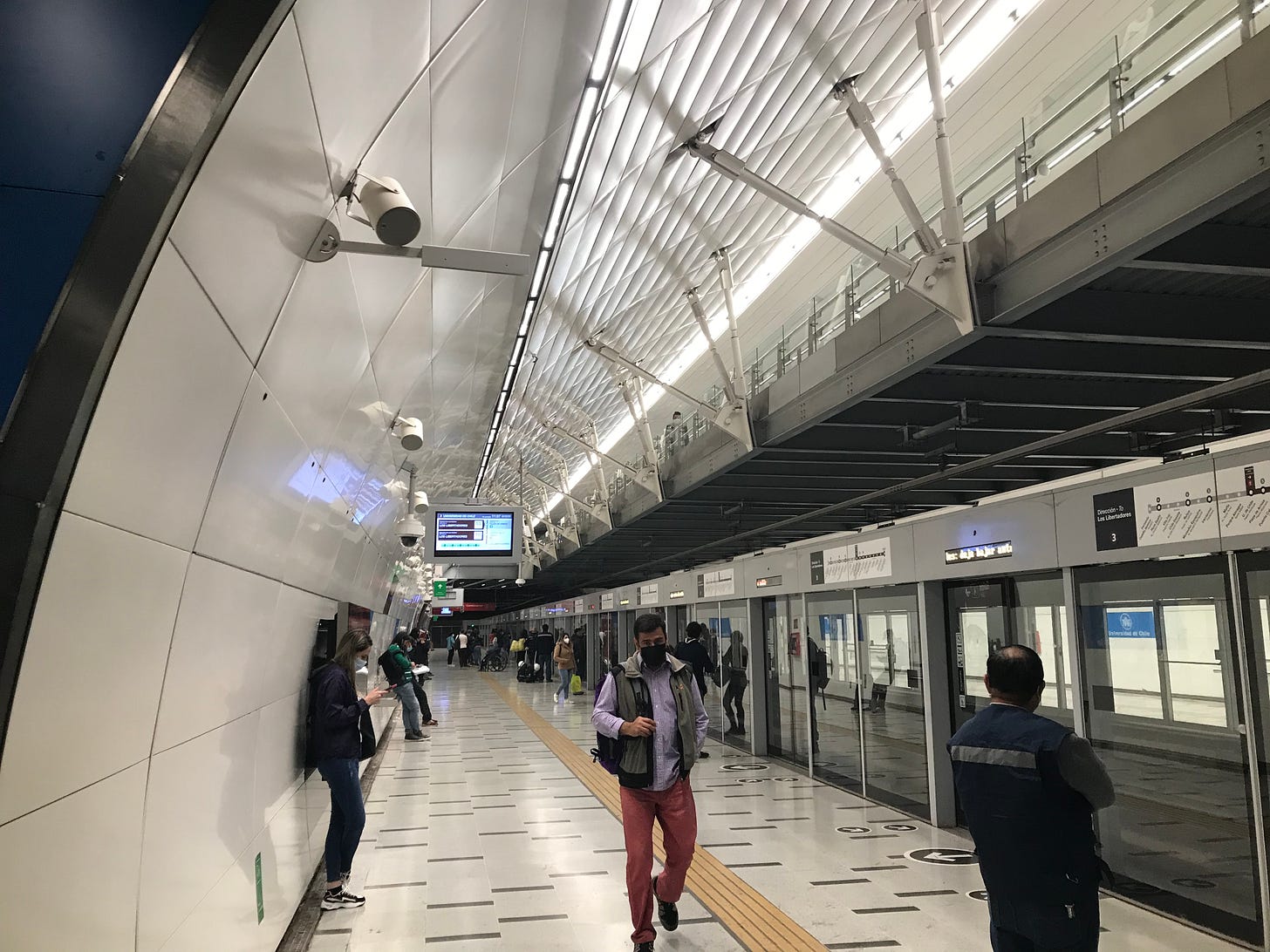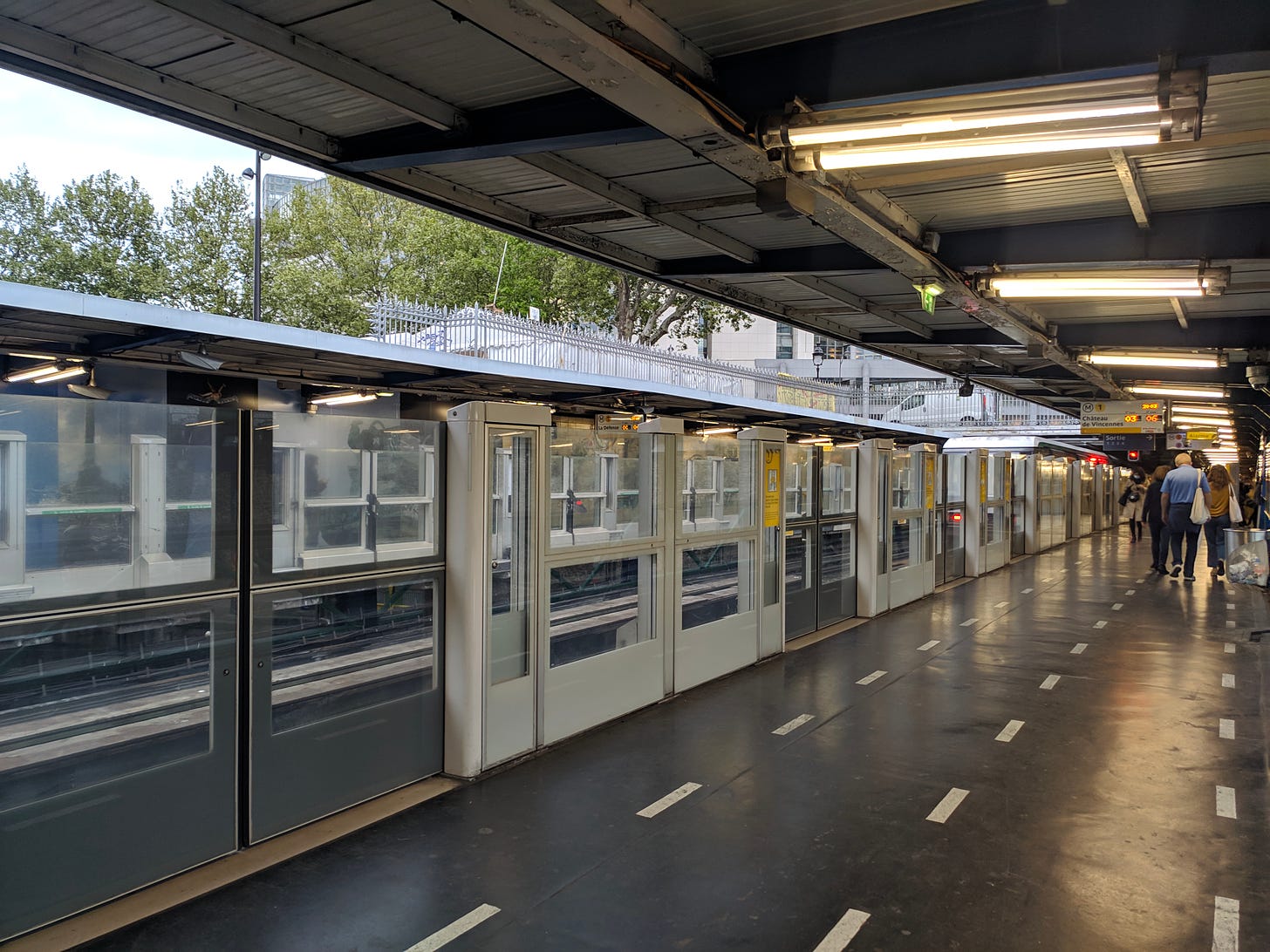I hate the lack of platform screen doors here, and that's just the start...
North America has a long way to go to understand how to make transit universally appealing.
One of the most frustrating comments I see (often from seemingly transit supportive people/urbanists) when someone proposes a standard feature of modern public transit be implemented in North America is…
It’s unnecessary
It wouldn’t work here
The benefits are overplayed
Thats only for niche group of people . . . a,b,c
The transit agency says . . . x,y,z
We can’t have it because the system wasn’t designed for it
These comments (and many more like them) come up almost any time an outsider or a optimistic person within the transit discourse proposes almost any modern feature or improvement that does not currently exist within the system — be it platform screen doors, wifi, better service, electrification, level-boarding — the list goes on. In many ways, they feel like an attempt to cope with the disappointment or pessimism that comes from believing that their city is unlikely to get these things for one reason or another, and thus they must work backwards from the result and fabricate some seemingly legitimate reason why this must be the case.
I bring this up with reference to platform screen doors because they seem to epitomize this problem. Platform screen doors are the standard for new lines in much of Asia, and are basically standard in Europe and even now parts of the Americas. And yet, a lot of people still question the benefits. The argument here would probably go something like “well sure if you’re building a new line and you can design for it!” — which is a bad argument because it suggests that any given element is just a frill featured in some modern transit systems and not something worth some extra effort to install.
But in this case, that’s silly because platform screen doors have a lot of major benefits! The obvious and first people think of is improved safety — which is very real and probably the most valuable, but there is also:
The ability to climate control stations — this is hard without the seal from a purpose-designed station PSD interface, but with the right design and ventilation I would imagine PSDs would at least reduce the amount of particulate matter from brakes and tracks/wheels in the air over the platforms, helping improve air quality.
Improved comfort for riders — riders need not worry about themselves (or their kids!) ending up on the track, and at the same time the rush of wind from a train and noise is also reduced.
More flexible station design — by keeping the doors of trains in a constant location relative to the platform, PSDs allow for columns at the platform edge that can simplify station construction.
Enhanced fire safety — keeping tracks and platforms separate makes it easier to keep people safe in the event of a train fire, but perhaps even more useful — it helps keep smoke out!
Even if all you care for is raw capacity, platform screen doors are better! Not only do people board and alight more quickly when they can pre-align with the doors, but this also enables trains to enter stations at a higher speed. Platform screen doors also enclose the platform, increasing its effective capacity by enabling people to stand much closer to the “edge”.
So why do so many people seem to dislike platform screen doors?
Well, there’s always headlines from time to time — an MTR train just had an issue with PSD’s a few weeks ago. These infrequent occurrences are treated as a reason to not implement PSDs even though the incidents PSDs prevent are frequent and severe. This reluctance runs the gamut as well, and I’ve had more than a few “enthusiasts” tell me that we shouldn’t have safer platforms because they will miss seeing the trains!
Of course, some of this is symptomatic of broader problems.
One of these that I’ve touched on a few times in various mediums is the dogma that a change to a transit system is only worthwhile if it attracts substantial new users. The idea here is that since most people riding transit will ride with platform screen doors or without, platform screen doors have no value. That’s of course not the case because platform screen doors do improve people’s sense of safety, but even that is not recognized.
There’s also the issue of everything needing to be a megaproject. Simply retrofitting platform screen doors at a station for the reasons stated above is insufficient, if the station isn’t being rebuilt, such work is clearly necessary! Meanwhile in Paris, platform screen doors are rolled out quickly and at low cost (usually overnight), and at many very challenging locations on Line 1 in particular (columns, low ceilings, curves, etc). The idea that scope must creep is a huge problem.
Another big issue is one of stance. If your goal for a subway system is 100% platform screen doors, you look at every possible roadblock to them - from signalling, to rolling stock, and eliminate them. But, if like in the case of many systems your local North American (or European in some cases) transit system doesn’t want to install them — they will have plenty of excuses to fall back on. This is a hard problem to solve!
Ultimately, niche features are still hugely important to large numbers of people in a successful transit system that moves millions every day, and that’s also just a built-in feature of making transit attractive for everyone. Building new stations without platform screen doors, or buying new trains without high quality LCD wayfinding is penny-wise and pound foolish — saving a dollar today but, leaving you with worse transit tomorrow.






